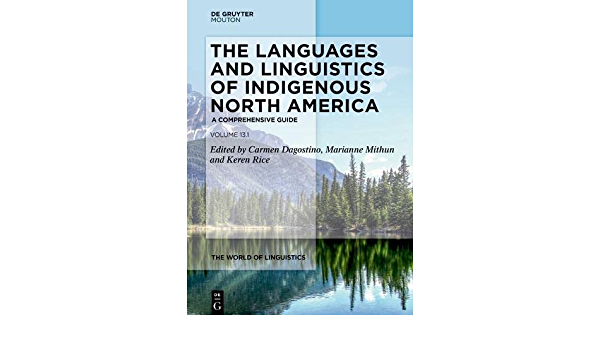The Iroquoian languages are indigenous to a wide area of eastern North America. The family consists of two main branches: Southern Iroquoian, represented only by Cherokee (ᏣᎳᎩ/Tsalagi), and Northern Iroquoian, consisting of Tuscarora (Skarù:ręʔ), Wendat (Huron)/Wyandot, Seneca (Onödowá’ga:’), Cayuga (Gayogohó:nǫʔ), Onondaga (Onųdaʔgegáʔ) Oneida (Onʌyotaʔa:ká:), and Mohawk (Kanien’kéha’), as well as several other languages with limited documentation: Nottoway, Laurentian, and Susquehannock. A number of features of the languages are of special interest. While their inventories of sounds are not large, there have been intriguing developments in some of the sound systems, among them some complex stress patterns, some tone distinctions, and laryngeal spreading. Morphologically they are polysynthetic, and there is noun incorporation. Word order generally conveys information structure rather than syntactic role. Despite the structural complexities of the languages, there are now impressive projects underway in the communities, aimed at passing on the languages to new generations. There is a long Iroquoian cultural tradition of appreciating language, of valuing linguistic skill as an art form and cultivating it as a source of enjoyment. These projects are heightening such values and having powerful effects in the communities.
The Iroquoian languages are indigenous to a wide area of eastern North America. The family consists of two main branches: Southern Iroquoian, represented only by Cherokee (ᏣᎳᎩ/Tsalagi), and Northern Iroquoian, consisting of Tuscarora (Skarù:ręʔ), Wendat (Huron)/Wyandot, Seneca (Onödowá’ga:’), Cayuga (Gayogohó:nǫʔ), Onondaga (Onųdaʔgegáʔ) Oneida (Onʌyotaʔa:ká:), and Mohawk (Kanien’kéha’), as well as several other languages with limited documentation: Nottoway, Laurentian, and Susquehannock. Some additional groups have been identified as Iroquoians in historical accounts, but there is little documentation of their languages: Meherrin, Tionontati (Petun), Erie, Neutral, and Wenro.
A number of features of the languages are of special interest. While their inventories of sounds are not large, there have been intriguing developments in some of the sound systems, among some complex stress patterns, some tone distinctions, and what has been termed laryngeal spreading, whereby voicelessness or glottalization spreads over the preceding syllable. At the word level, the languages are well known for their polysynthesis, that is, elaborate verb structures, which can serve as whole sentences on their own. All verbs contain pronominal prefixes identifying their main participants, though the categories they encode are not the familiar subjects and objects, but grammatical agents and patients. There is noun incorporation, whereby a noun stem can appear inside of a verb. In part because so much can be conveyed within a verb, what might be expressed in a multi-word sentence in other languages can be conveyed in a single word in these languages. At the sentence level, constituent order generally conveys the relative importance of elements to the message at that moment, rather than syntactic role.
Despite the structural complexities of the languages and community experiences with language loss, there are now impressive projects underway in the modern communities, aimed at passing on the languages to new generations. There is a long Iroquoian cultural tradition of appreciating language, of valuing linguistic skill as an art form and cultivating it as a source of enjoyment. These projects are heightening such values and having powerful effects in the communities.
What follows is an outline of the languages and their relationships, descriptions of basic sound, word, and sentence patterns, and an overview of notable community language revitalization projects.
Publication Type
- Article



